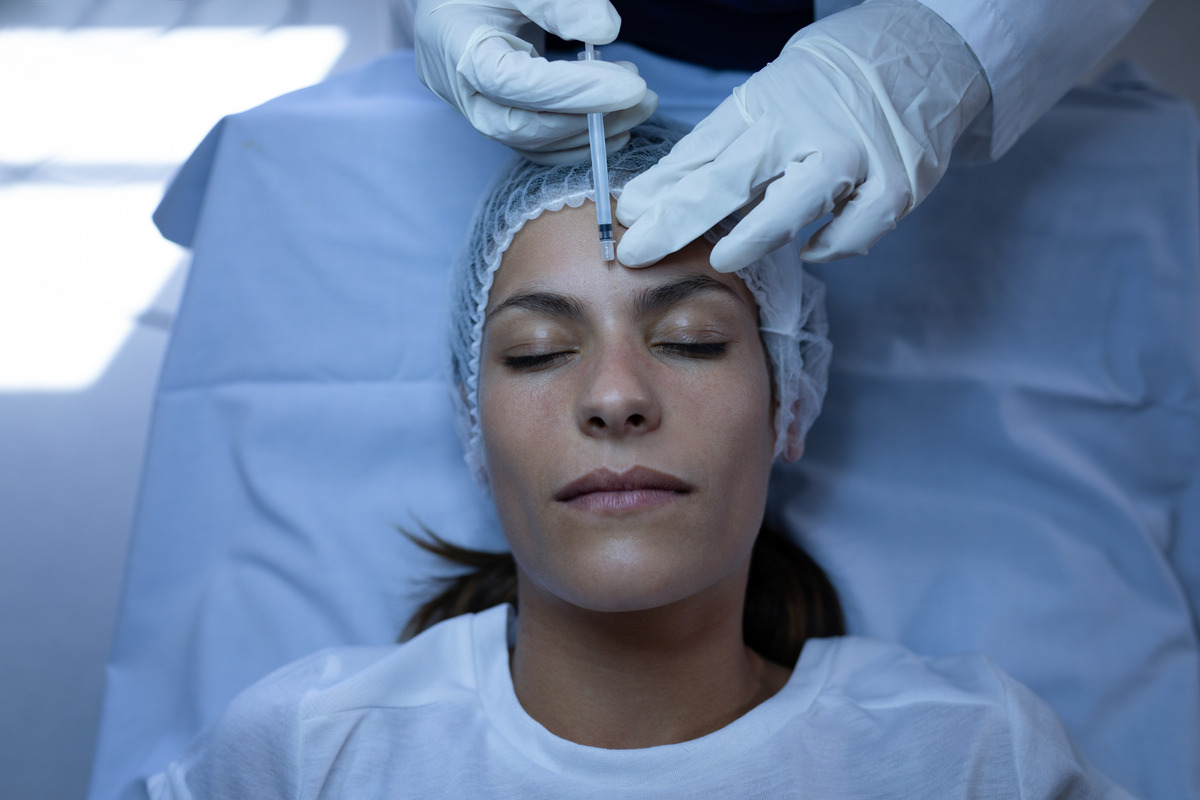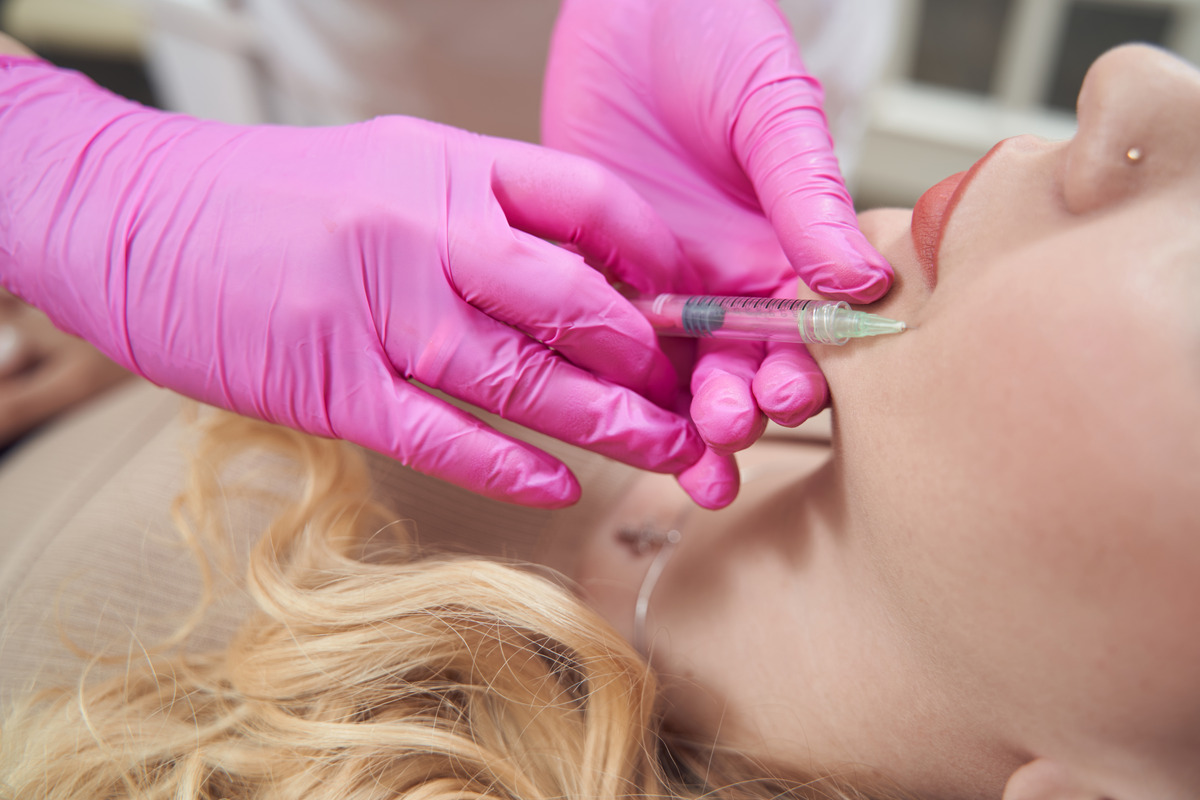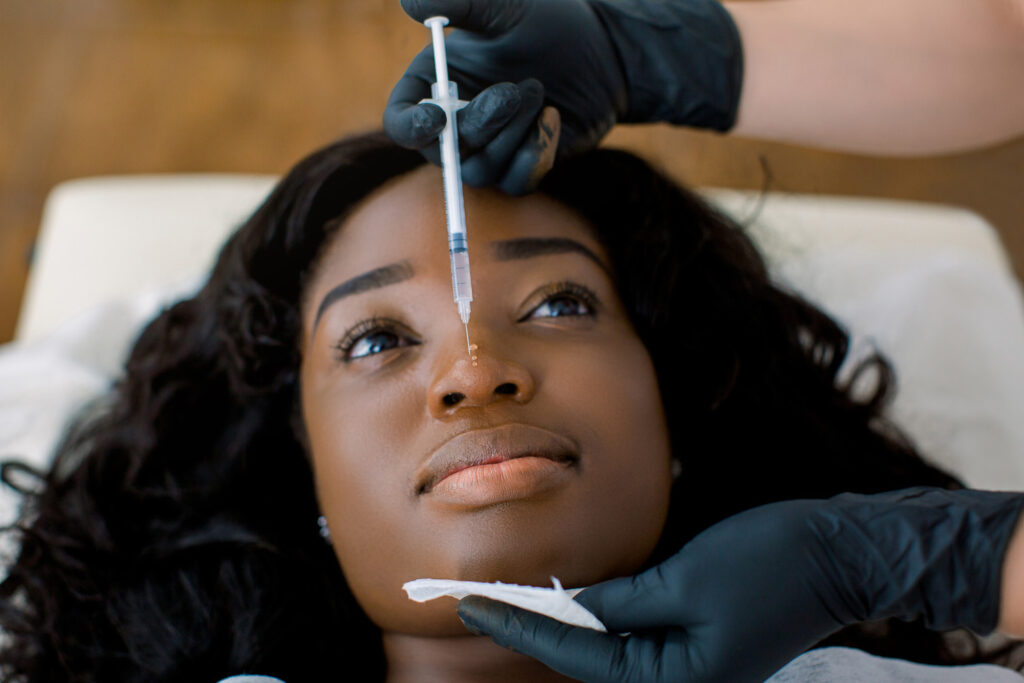According to the American Society of Plastic Surgeons, Botox injections became the most popular ablative cosmetic procedure in the U.S. in 2021 with more than 4.6 million procedures being performed.
Over the past two decades, Botox has grown popular in its use for aesthetic purposes. Journal of the American Academy of Dermatology study found a 759% increase in Botox procedures between 1997 and 2015.
Understanding Botox: A Deep Dive
What is Botox and how does it work?
Botox comes from a neurotoxin produced by the bacterium Clostridium botulinum which causes temporary relaxation of muscles by attaching to the nerve endings in the muscle and stopping the release of acetylcholine which triggers muscle contraction.
As time goes by, the nerve endings grow new branches to restore the release of acetylcholine and this usually takes around 3-4 months.
The areas of treatment like the muscles causing wrinkles are injected with Botox allowing treatment on those specific areas.
How Botox Became a Household Name
Botox was first made in the 1970s from a toxin produced by bacteria. Doctors used it to treat medical conditions like crossed eyes and uncontrolled blinking by temporarily paralyzing muscles.
In the late 1980s, Canadian doctors found that injecting Botox could smooth wrinkles between the eyebrows and therefore used it for cosmetic purposes to reduce wrinkles caused by facial muscle movements. After testing showed it was safe and effective for cosmetics in the 1990s, the FDA approved Botox in 2002 for temporarily improving frown lines between the eyebrows in adults.
Botox was marketed as a way to look younger and more refreshed by relaxing facial muscles that cause wrinkles. Many people started using it because it was minimally invasive with little downtime. Strict guidelines by the manufacturers of Allergan on the doses helped ensure Botox could be administered safely when used properly.
Because Botox had been used safely for many years to treat medical issues first, it became a popular and trusted cosmetic treatment used by millions worldwide for a younger look.
The Science Behind Botox

Mechanism of Action
Botox is made from a toxin that blocks nerve signals to muscles causing temporary paralysis leading to muscle relaxation. As the muscle stays relaxed, the skin on top of it smooths out and unwrinkles.
The effects last around 3-4 months before the body gets rid of the Botox and the muscle can move again normally.
Areas of Application
Botox is most commonly used on wrinkles caused by facial movements and expressions, like frown lines between the eyebrows or crow’s feet around the eyes. But it can also treat many other areas by relaxing muscles, such as:
- Horizontal forehead lines
- Bunny lines on the sides of the nose
- Neck bands or cords
- Jaw muscles to slim the jawline
- Underarms to reduce excessive sweating
Botox in Cosmetic Enhancement
Popular Cosmetic Uses
Forehead Lines
Botox is used to reduce horizontal lines across the forehead from raising eyebrows.
- Before: A woman had deep lines across her forehead, especially when raising her eyebrows.
- After: She said after Botox, her forehead was smooth with no lines, even when moving her eyebrows including that she could still move them normally.
Crow’s Feet
Botox treats fine lines at the corners of the eyes caused by smiling and squinting
- Before: A man said the lines by his eyes were very noticeable when smiling.
- After: He said after Botox, the lines by his eyes were much softer and less obvious, but he could still smile normally.
Frown Lines
Botox smooths vertical lines between the eyebrows from frowning
- Before: Another woman had vertical lines between her eyebrows from frowning over the years.
- After: She said those frown lines were almost completely gone after getting Botox to relax the muscles there.
Botox’s Role in Medical Treatments
Beyond Aesthetics
Botox is majorly known for its cosmetic use but it can also be used in the medical treatment of some conditions therefore improving the quality of life for many patients.
Examples include;
Chronic Migraines whereby Botox injections are given around the head and neck, therefore helping in the prevention of chronic migraines it works by temporarily paralyzing specific muscles, which can then interrupt the flow of neurotransmitters that carry pain signals, therefore reducing the severity of migraines and also its frequency.
Hyperhidrosis, which is also known as excessive sweating, often affects areas like the underarms, palms, and soles of the feet, so the Botox injections block the release of the chemical that signals sweat glands, leading to reduced sweating for several months.
Muscle Spasticity For patients with conditions like cerebral palsy, stroke, or multiple sclerosis Botox can be used to help relax the contracted muscles which can thereafter improve mobility.
Eye Muscle Disorders Certain eye muscle conditions like strabismus (crossed eyes), blepharospasm (uncontrolled blinking), and hemifacial spasm (involuntary contractions on one side of the face) can be treated using Botox by weakening certain muscles bringing about proper eye alignment and relieving uncomfortable contractions.
What to Expect: The Botox Treatment Experience
Before the Procedure
The procedure begins with a consultation whereby the provider evaluates the areas you want to be treated and then develops a personalized treatment plan. The provider will explain the Botox procedure including how the procedure is, the risks and side effects, and the results one can expect.
The provider will take your medical history, because some conditions or medications may increase the risks associated with Botox.
The provider will also add some pre-treatment instructions, which may include avoiding blood thinners, anti-inflammatory medications, or supplements that can increase bruising or bleeding for a certain period before your appointment.
During and After the Procedure
The Botox procedure is quick as it takes around 10-20 minutes. The provider will use a fine needle to inject the Botox into the area of treatment. There may be some discomfort or a stinging sensation during the injections, but it is generally well-tolerated.
After the injections are done, you can return to your normal activities immediately but it may be recommended to avoid extreme exercise.
After the Procedure:
After the procedure, you may experience mild swelling, redness, or bruising around the injection sites, but these side effects last a short while and should go away within a few days.
Some aftercare instructions may be given which may include avoiding rubbing the treated areas, staying upright for 4 hours after the treatment, and avoiding strenuous exercise for 24 hours which helps keep the Botox remain in the intended treatment area.
It usually takes 2 weeks to see the results of Botox as the muscles relax and smooth out and during this time, you should avoid activities that may cause Botox to spread to unintended areas, such as lying down for extended periods or performing certain facial exercises.
Safety, Side Effects, and Ethical Considerations
Understanding the Risks
Although Botox is a safe procedure it may come with some risks and these include:
- Bruising, swelling, or redness where the injection was given.
- Headaches or feeling like you have the flu.
- Droopy eyelid or eyebrow.
- Dry mouth or too many tears (if injected near the eyes).
- Others that are serious but also rare are breathing problems, vision issues, muscle weakness, and allergic reactions.
- To avoid or reduce these risks always look for an experienced provider and follow all the instructions that are given to you.
Achieving and Maintaining Results with Botox

Realistic Expectations
Botox lasts around 3-4 months and you’ll be required to go for your follow-up injections to maintain results. It can take up to 2 weeks to see the full result. How long results last can vary based on your age, the dosage used, and how quickly your body metabolizes the Botox.
To help maintain results longer:
- Avoid rubbing or massaging the treated areas
- Limit extreme exercise for 24-48 hours after injections
- Avoid saunas, hot tubs, and direct sun exposure
- Get touch-up treatments every 3-4 months
Navigating the Costs and Financial Considerations of Botox
Investment in Aesthetics
The costs can vary based on a few factors.
- Cost Per Unit
Botox is priced by the unit and according to RealSelf.com, the average cost per unit ranges from $10 to $15 across the United States.
- Areas Treated
Depending on how many units are needed, will determine the cost also depending on the areas being treated. The forehead lines may require 10-20 units, while areas like crow’s feet may need 6-12 units per side.
- Provider Fees
In addition to the per-unit costs, providers also charge fees for the treatment itself, consultation, and facility fees. These fees range from $100 to $400 or more.
Most insurance plans do not cover Botox when used for cosmetic purposes although it may sometimes be covered if used for approved medical treatments like chronic migraines or muscle spasms.
Payment plans or financing options are offered by most cosmetic practices allowing you to pay over time, the most popular plans include CareCredit and Alphaeon Credit.
Selecting a Qualified Botox Provider
Finding the Right Practitioner
- Always look for proper certification like the board certification in dermatology, plastic surgery, or a related medical field which shows the provider meets the standards to perform the procedure.
- Consider their Botox experience – more experience equals better skills therefore choose experienced providers.
- Research the medical facility – check online reviews from patients who’ve been there before and make sure the facility is licensed properly.
- In case you feel the facility seems untrustworthy, avoid it or if it doesn’t follow strict safety rules then avoid it.
Wrapping Up: The Takeaway on Botox
In conclusion, Botox is a safe cosmetic and medical procedure which is used to treat and get rid of wrinkles and it is always advisable for it to be performed by a qualified and experienced provider to avoid risks and for one’s safety purposes. Areas that are mostly treated with Botox include forehead wrinkles, crow’s feet around the eyes, and frown lines between the eyebrows.
The effects of Botox are not permanent, it can last around 3-4 months and then one is needed to attend the follow-up injections after. Botox is not covered by insurance except when it is approved for like in cases of treating medical conditions but financing options can be provided by the facilities.
Engage with Us: Your Next Steps Towards Aesthetic Excellence
If Botox interests you, the first step to take is consultation with an experienced and qualified professional and by this, it should be board-certified dermatologists, plastic surgeons, or medical spas that specialize in cosmetic treatments like Botox.
In the consultation session, share your goals, expectations, and concerns to know if the procedure is fit for you, as the provider takes your history to help in the same.
Something to note is the results are temporary and you’ll be required to attend follow-ups.
FAQ Related To Botox
Is Botox safe and what are the possible side effects?
It is safe when done by a qualified provider and possible side effects include bruising, headache, droopy eyelid, and muscle weakness.
How long does a Botox treatment last?
It lasts 3-4 months before touch-ups are needed.
Can Botox be used for conditions other than wrinkles?
Yes, it is used to treat migraines, excessive sweating, and muscle spasms
How much does Botox cost?
It is priced by the unit and according to RealSelf.com, the average cost per unit ranges from $10 to $15 across the United States.
What should I expect during my first Botox appointment?
Consultation on areas of concern and personal goals, explain the procedure, and treatment itself which takes about 10-20 minutes.
How do I choose a qualified Botox provider?
Look for board-certified dermatologists, plastic surgeons, or medical spas specializing in aesthetic treatments.
Can Botox treatments be reversed if I’m not satisfied with the results?
No, once injected, it cannot be reversed until it wears off in 3-4 months.
Are there any age restrictions for getting Botox?
It is FDA-approved for ages 18-65. Providers may have additional restrictions for younger patients.
How can I maintain the results of my Botox treatment for longer?
By avoiding rubbing treated areas, limiting extreme exercise after treatment, and following aftercare instructions.

